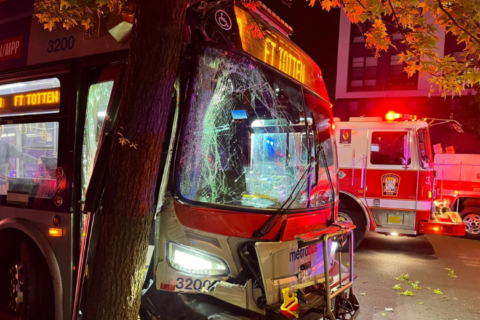Thousands of people have received tickets for driving or parking in D.C.’s dedicated bus lanes, ever since a program that aims to make buses safer and more efficient advanced to its second phase earlier this year.
As part of its Clear Lanes initiative, D.C.’s Department of Transportation started giving citations in January to those illegally driving, parking, standing or stopping in a bus lane. That followed a warning period, during which drivers weren’t fined.
All told, 2,692 citations have been issued for bus lane violations since Jan. 29, according to DDOT data obtained by WTOP. However, Acting Director Sharon Kershbaum said it’s still too soon to determine whether the program has been effective.
It usually takes a few months to see a drop in citations, she said.
“The goal of Clear Lanes is really behavior change,” Kershbaum said. “We want to make sure that we don’t have vehicles that are blocking the bus zone or the bus lane.”
The bus lanes are spread out across the city, and are usually painted red with block lettering. Many also have signs nearby.
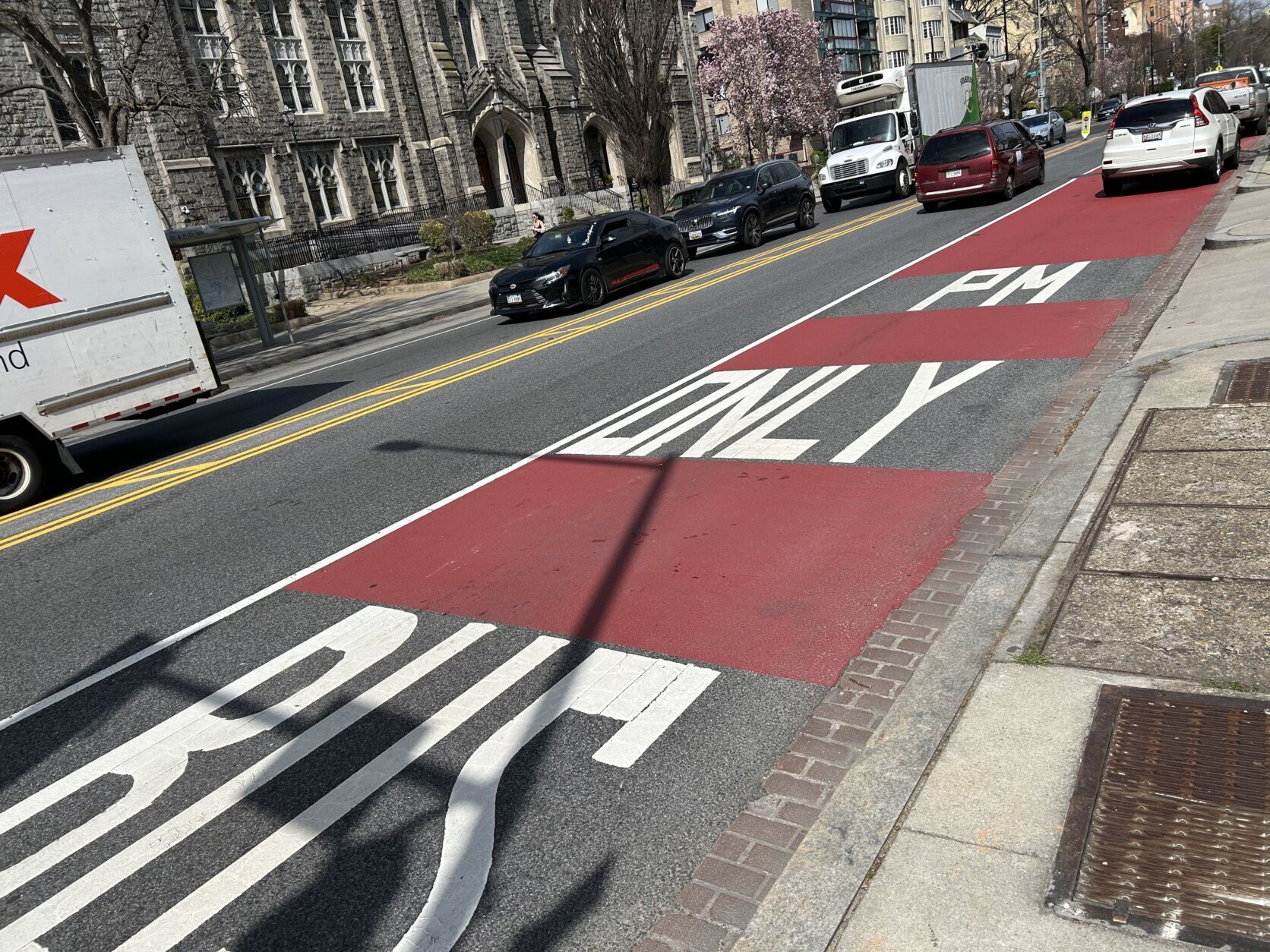
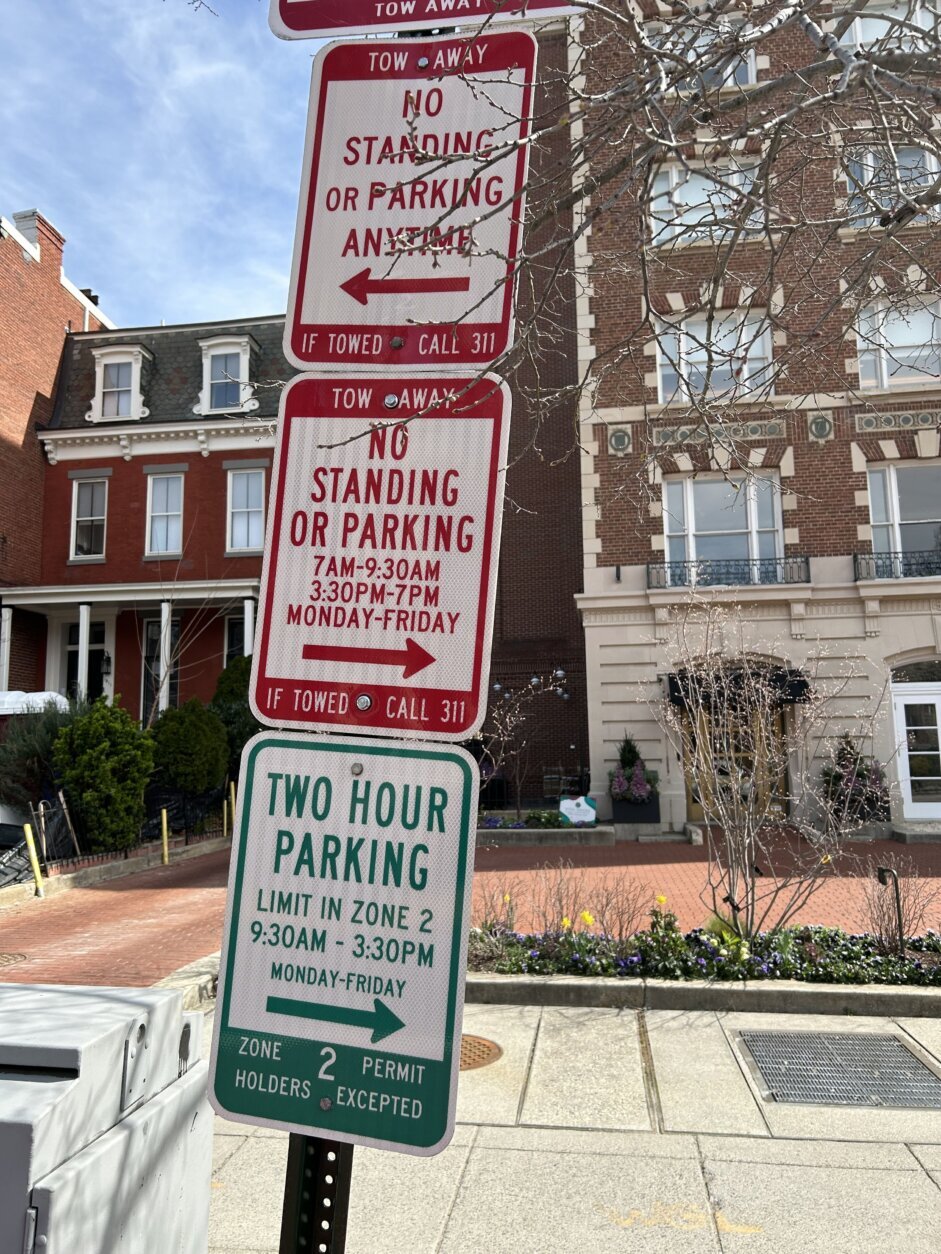
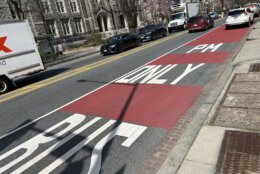
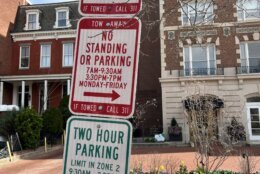
Driving, parking, standing or stopping in a designated bus lane comes with a $100 fine. Cameras mounted on buses take pictures of violators. The vehicle information is then sent directly to DDOT.
“With our priority bus lanes, we want to make sure that our buses can continue to move quickly,” Kershbaum said. “When you have a vehicle that is parked or just stopping in the middle of a bus lane, and the bus needs to get out of the lane to drive around it, that dramatically slows the speed of the bus.”
As a result of that, Kershbaum said the whole route takes longer, too.
The city is building 25 miles of priority bus lanes, she said, enabling buses to get through routes faster. But, “the key of it is, we can’t have people blocking those priority bus lanes.”
With a combination of enforcement and priority bus lanes, Kershbaum said other cities have seen about 30% efficiency improvements “in terms of how long it takes to get from one segment of a route.”
The initial phase of the program, which launched in November, focused on bus stops, rather than bus lanes. Drivers parking, standing or stopping in areas around bus stops on certain routes started receiving $100 fines in November.
A total of 17,885 of the bus zone citations have been issued since Jan. 29, far more than the bus lane violations, according to DDOT data.
When drivers block the area around a bus stop, Kershbaum said, “It means that the buses have to actually stay in the roadway. And you’ve got people that are walking in between cars. It’s incredibly dangerous.”
In the case of speed cameras, Kershbaum said it takes four to six months before there’s a gradual decline in citations, indicating a potential change in driver behavior.
“I’m imagining it’s going to be similar with Clear Lanes,” Kershbaum said. “The first time you get ticketed, that’s going to be the realization, ‘I can’t do this anymore.'”
Get breaking news and daily headlines delivered to your email inbox by signing up here.
© 2024 WTOP. All Rights Reserved. This website is not intended for users located within the European Economic Area.




